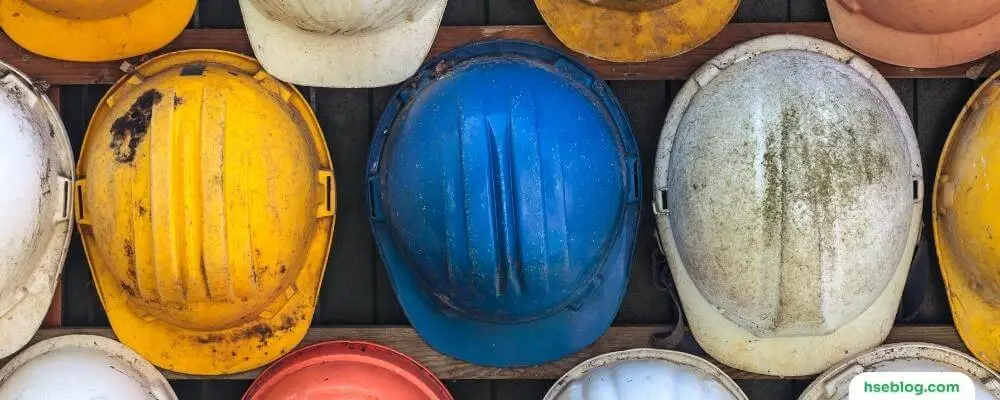Safety helmets are only required on an as-needed basis, so if a risk assessment does not identify any head injury risks, they need not be worn. However, different construction sites may operate their own rules. If a risk assessment has identified the possibility of head injury, safety helmets are mandatory, regardless of the construction worker’s nature or the project’s size.
Safety helmets used on UK construction sites must be manufactured to British Standard (BS) EN 397, including rigorous tests for impact resistance and flame retardance. Employees or visitors to a construction site should be provided with a safety helmet by their employer or the main contractor. Still, self-employed workers (including subcontractors) may need to provide their own.
10 Tips for Choosing the Right Safety Helmet
Safety helmets are an important part of protecting your head while working. They can prevent serious injury in a fall or other accident. However, not all safety helmets are created equal. You need to choose the right one for the job you are doing. Here are 10 tips for choosing the right safety helmet!
1. Choose The Appropriate Helmet Style For Your Job
Different tasks and environments necessitate different types of safety helmets. For instance, full-face helmets protect the entire head and face, ideal for jobs with flying debris or chemicals. On the other hand, half-face helmets may be suitable for jobs that require protection but also need the face unobstructed, such as carpentry. A helmet with a chin strap can prevent the helmet from falling off during high-movement tasks or in windy environments.
2. Check For Certification
Safety helmets must meet certain safety standards to be effective. Ensure the helmet you choose has been tested and certified by a reputable body such as ANSI (American National Standards Institute) or OSHA (Occupational Safety and Health Administration). Certification means the helmet has undergone rigorous testing to prove its effectiveness in preventing injuries.
3. Look For Comfort
A comfortable helmet is more likely to be worn consistently. Check that the helmet has adjustable straps to ensure a snug fit. It shouldn’t be too tight to cause discomfort or too loose to wobble. The interior should also have cushioning for comfort during long periods of wear.

4. Consider The Weight
A heavy helmet can cause neck strain during extended use. Opt for a lightweight helmet that doesn’t compromise on protection. Lightweight materials such as carbon fiber or lightweight plastics can offer protection while ensuring ease of movement and reducing fatigue.
5. Consider Ventilation
Working in a helmet can cause your head to become hot and sweaty, which can be extremely uncomfortable. Helmets with proper ventilation through air vents or breathable materials can help reduce heat and increase comfort levels, especially in hot environments.
6. Check For Extra Features
Additional features like face shields, visors, or earmuffs can be beneficial depending on your work environment. For example, a helmet with a built-in visor can protect the eyes from flying particles, while earmuffs protect against high noise levels in industrial settings.
7. Select The Right Material
Safety helmets are made from various materials, such as polyethylene, polycarbonate, or Kevlar. The choice of material will affect the helmet’s durability, impact resistance, and weight. For example, Kevlar is known for being incredibly strong and lightweight, making it an excellent choice for high-risk environments.
8. Consider The Environment
Evaluate the specific hazards of your workplace. An electrically insulated helmet is vital if you’re working near electrical hazards. A helmet with superior impact protection is essential in construction sites where falling objects are a risk. If fire is a hazard, materials with fire-resistant properties should be considered.
9. Look For Protective Padding
Padding in a helmet can offer additional protection against impacts. A helmet with dense, high-quality padding will not only be more comfortable but can also significantly reduce the force of impact on the head in the event of an accident.
10. Check For Replacement Parts
A safety helmet’s lifespan can be extended with replaceable parts like straps, suspension systems, or padding. This way, instead of replacing the entire helmet when a component wears out, you can simply replace the necessary part, saving money and reducing waste. Additionally, check if the manufacturer provides guidance on how often to replace these parts.
Choosing the right safety helmet is important in keeping you safe while on the job. By following these 10 tips, you should be able to find a helmet that meets your needs and provides optimal protection.

Conclusion
In conclusion, choosing the right safety helmet is a crucial step in ensuring your protection at the workplace. By selecting a helmet style appropriate for your job, ensuring it is certified, focusing on comfort, considering the weight and ventilation, looking for extra features, selecting the right material, considering the work environment, ensuring there is protective padding, and checking for replaceable parts, you can optimize both safety and comfort. Making a well-informed choice will safeguard your well-being and enhance your productivity and efficiency at work.

